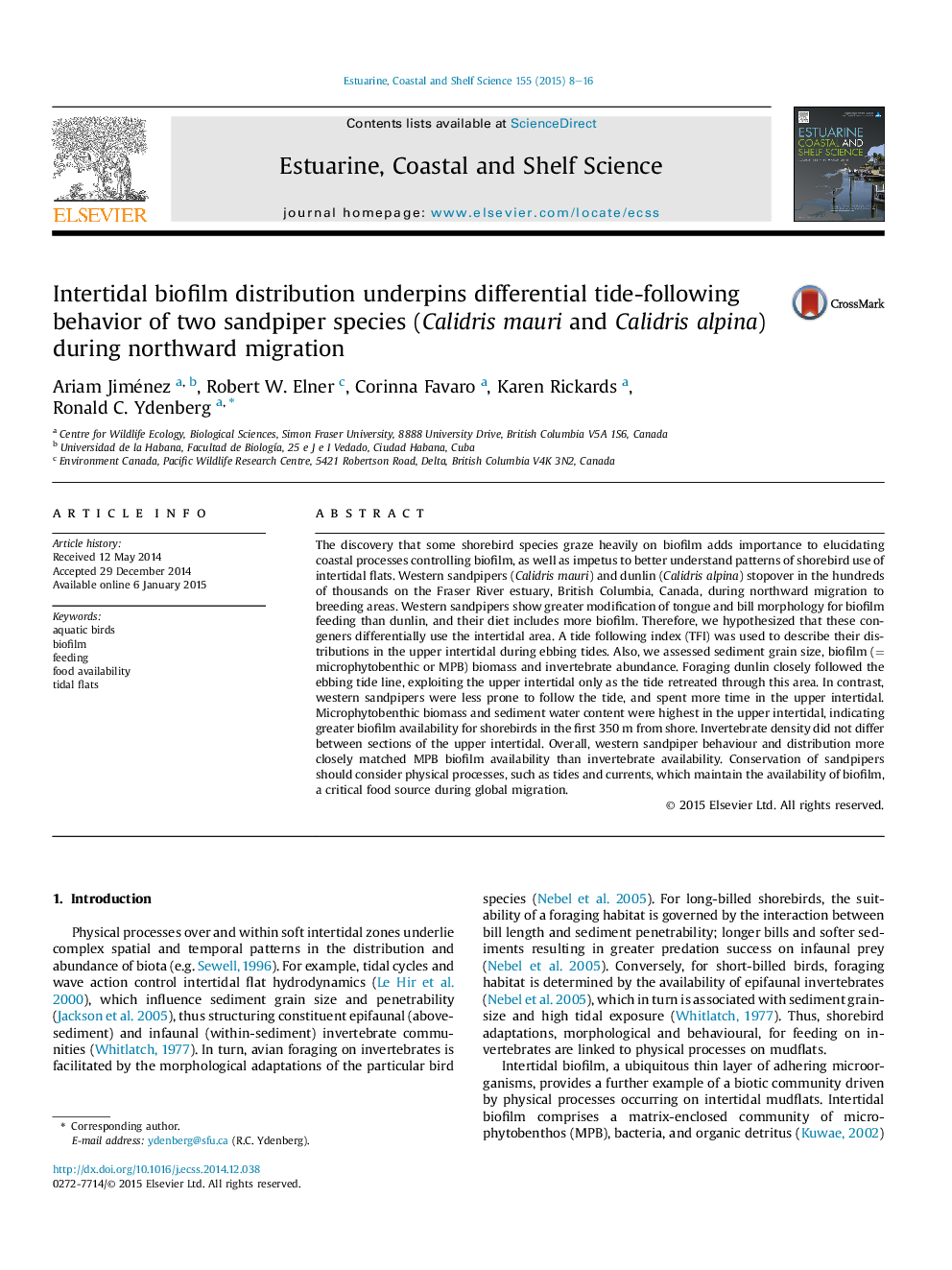| کد مقاله | کد نشریه | سال انتشار | مقاله انگلیسی | نسخه تمام متن |
|---|---|---|---|---|
| 4539608 | 1626641 | 2015 | 9 صفحه PDF | دانلود رایگان |

• Western sandpipers and dunlin follow ebbing tides while foraging on stopovers.
• Tide following foraging behaviour is stronger for dunlin than western sandpipers.
• Western sandpiper foraging distribution matched biofilm availability.
• Biofilm, an energy source for shorebirds, merits conservation consideration.
The discovery that some shorebird species graze heavily on biofilm adds importance to elucidating coastal processes controlling biofilm, as well as impetus to better understand patterns of shorebird use of intertidal flats. Western sandpipers (Calidris mauri) and dunlin (Calidris alpina) stopover in the hundreds of thousands on the Fraser River estuary, British Columbia, Canada, during northward migration to breeding areas. Western sandpipers show greater modification of tongue and bill morphology for biofilm feeding than dunlin, and their diet includes more biofilm. Therefore, we hypothesized that these congeners differentially use the intertidal area. A tide following index (TFI) was used to describe their distributions in the upper intertidal during ebbing tides. Also, we assessed sediment grain size, biofilm (= microphytobenthic or MPB) biomass and invertebrate abundance. Foraging dunlin closely followed the ebbing tide line, exploiting the upper intertidal only as the tide retreated through this area. In contrast, western sandpipers were less prone to follow the tide, and spent more time in the upper intertidal. Microphytobenthic biomass and sediment water content were highest in the upper intertidal, indicating greater biofilm availability for shorebirds in the first 350 m from shore. Invertebrate density did not differ between sections of the upper intertidal. Overall, western sandpiper behaviour and distribution more closely matched MPB biofilm availability than invertebrate availability. Conservation of sandpipers should consider physical processes, such as tides and currents, which maintain the availability of biofilm, a critical food source during global migration.
Journal: Estuarine, Coastal and Shelf Science - Volume 155, 20 March 2015, Pages 8–16